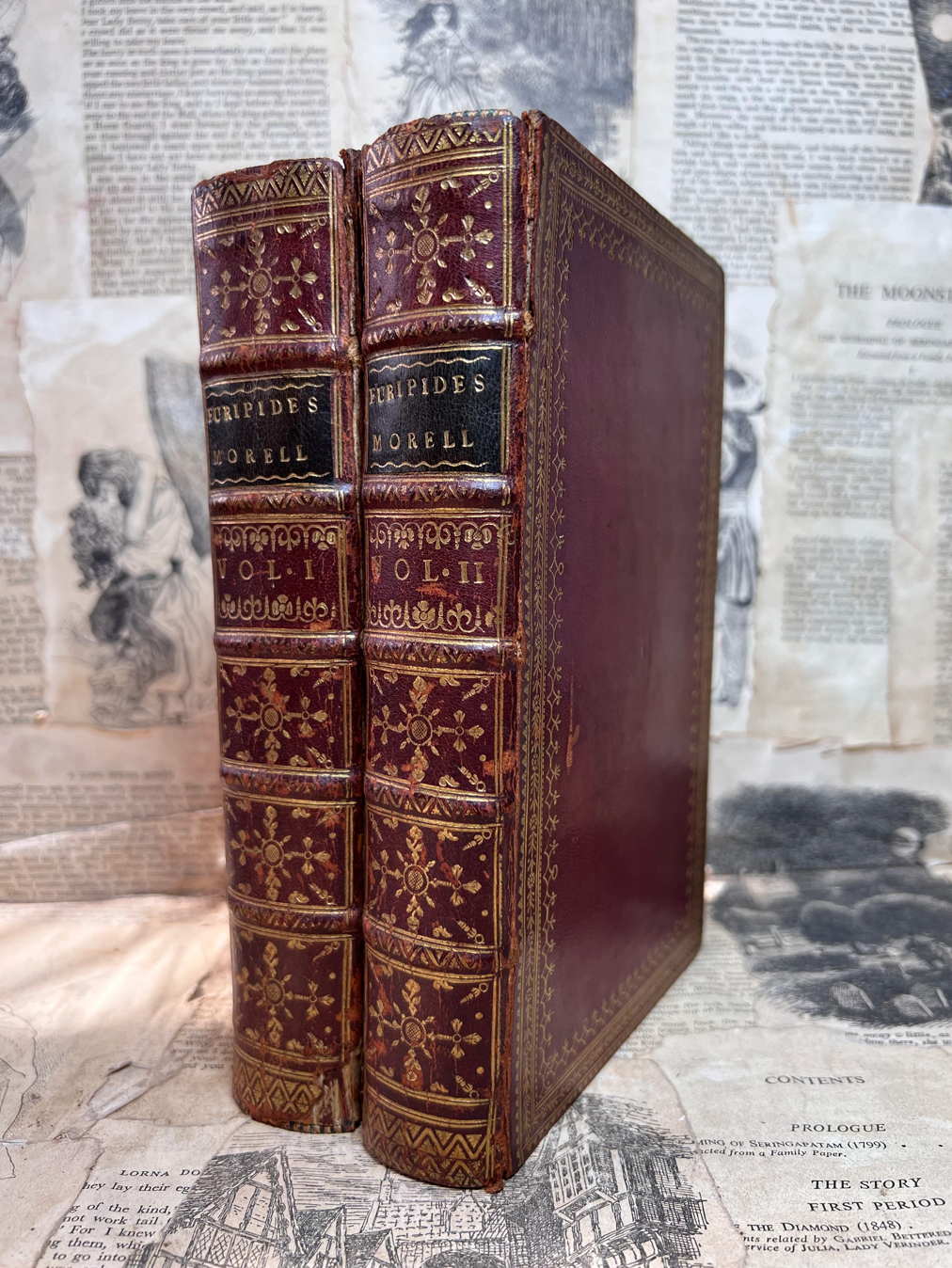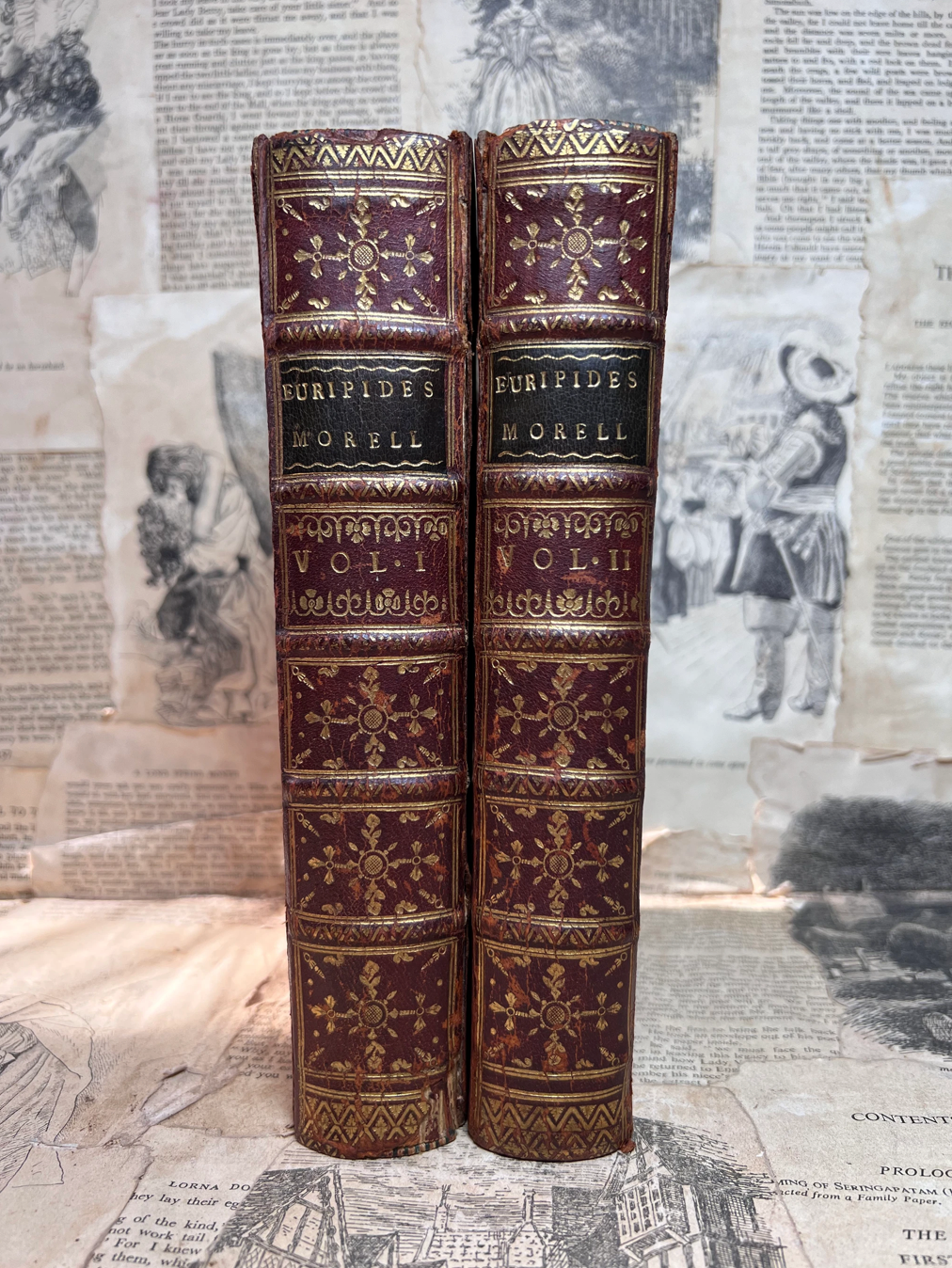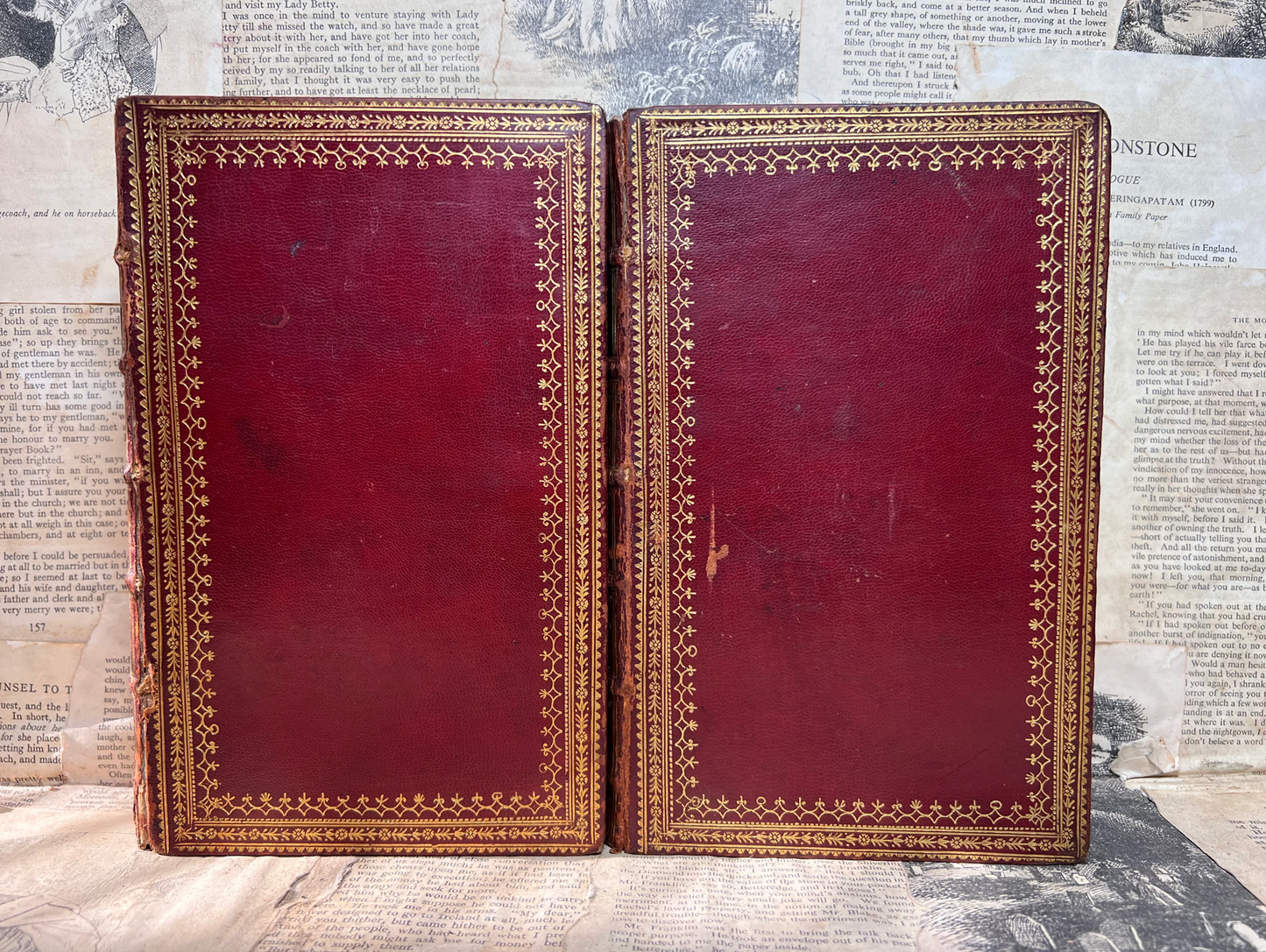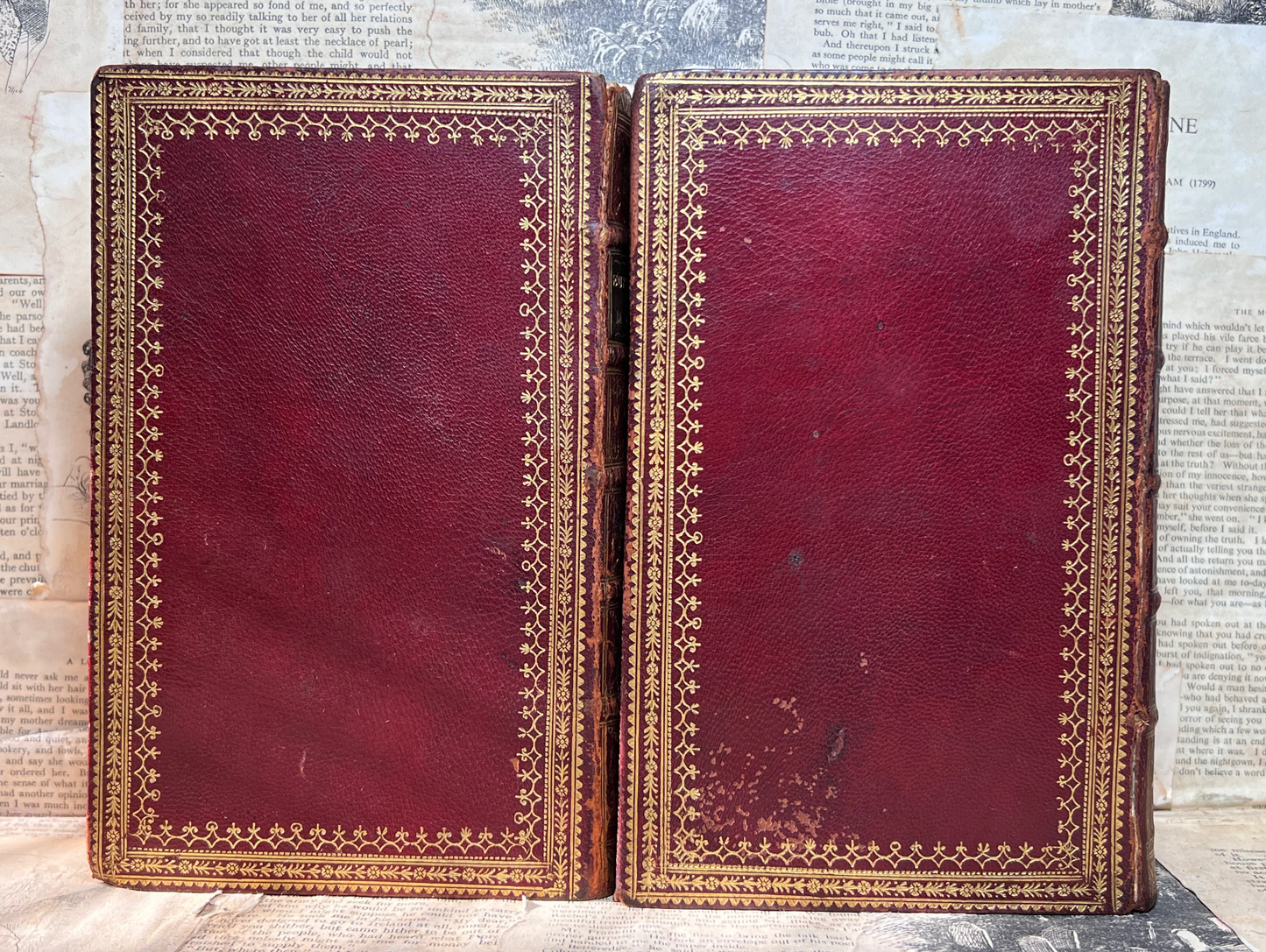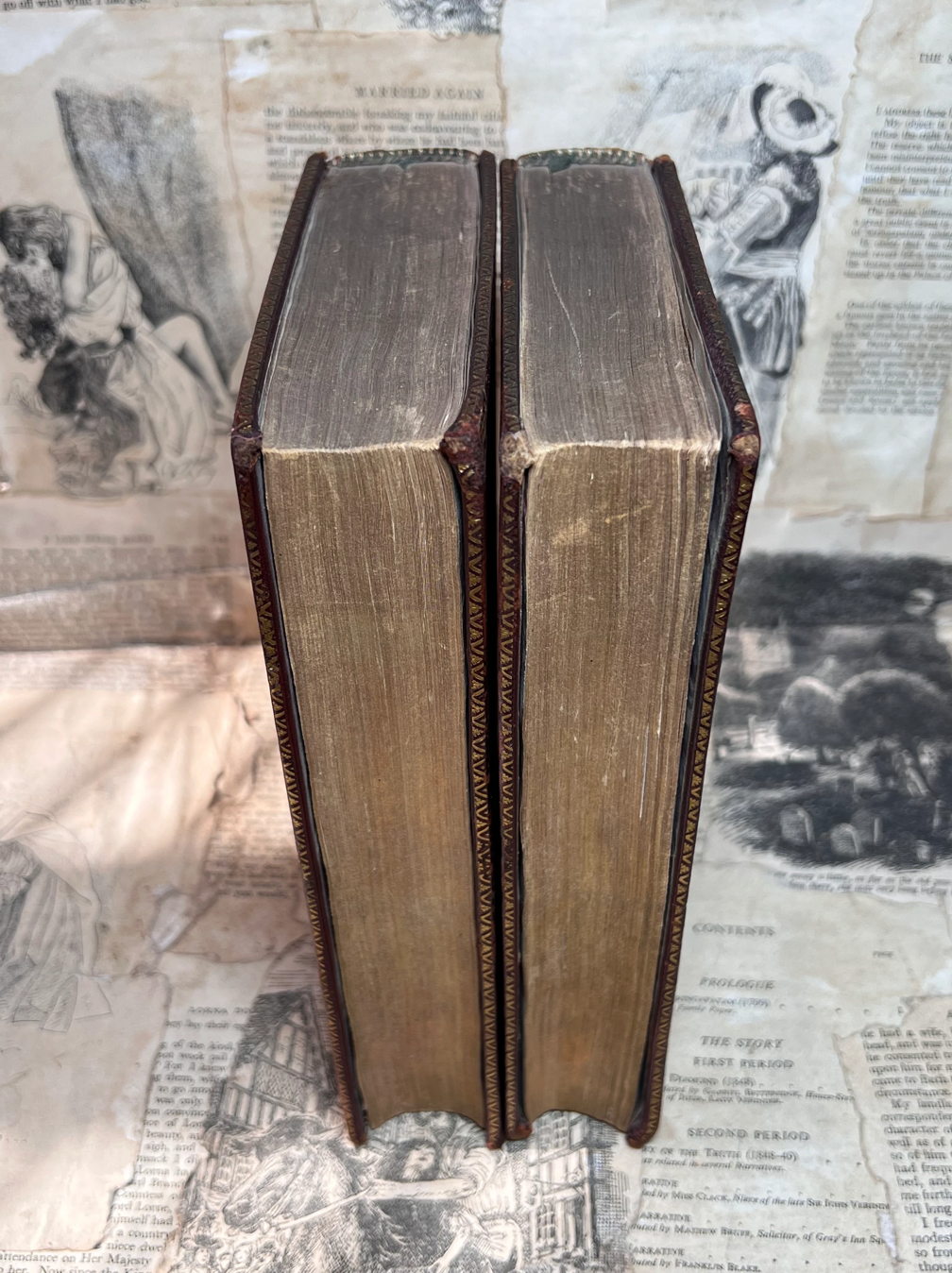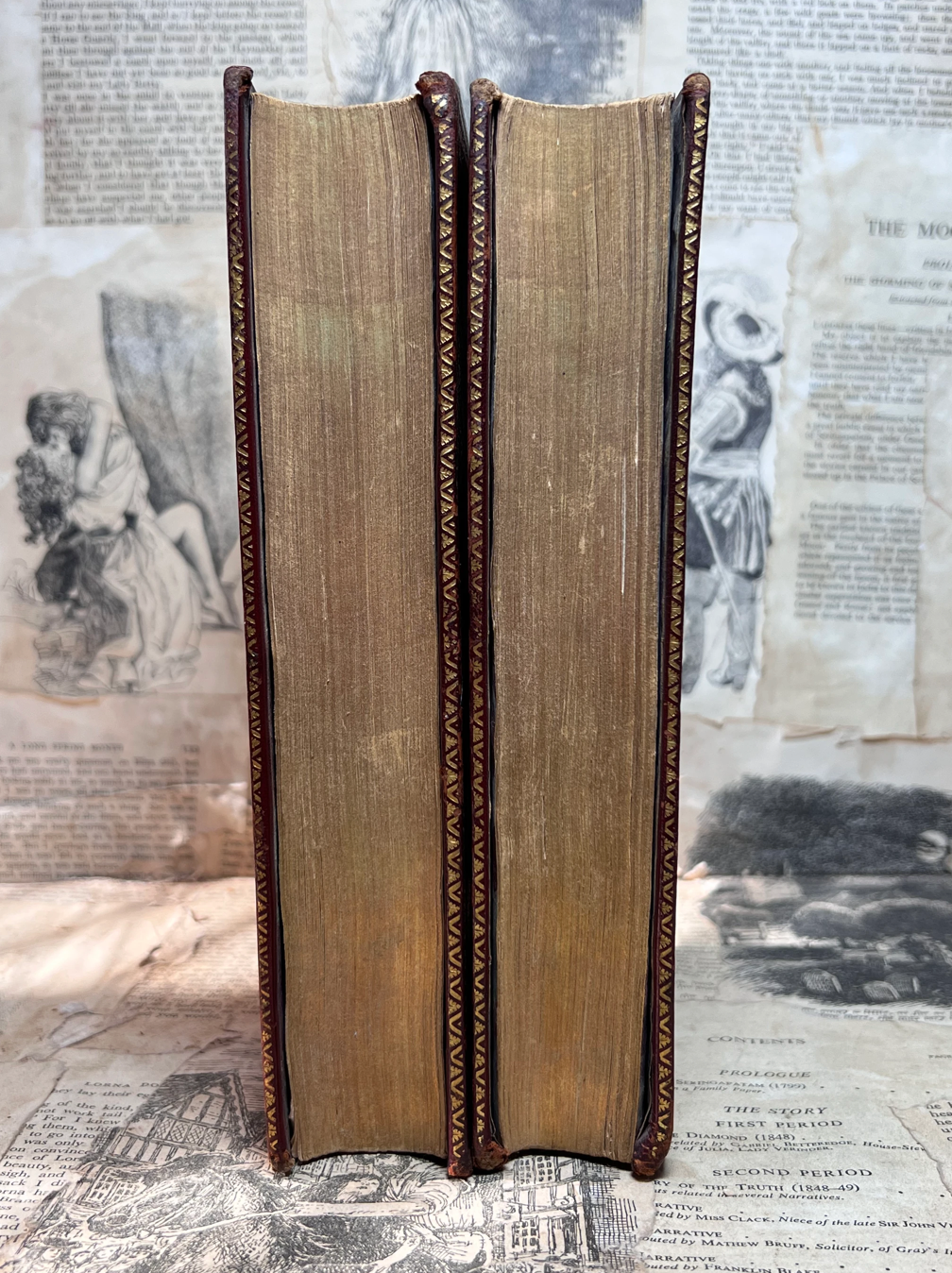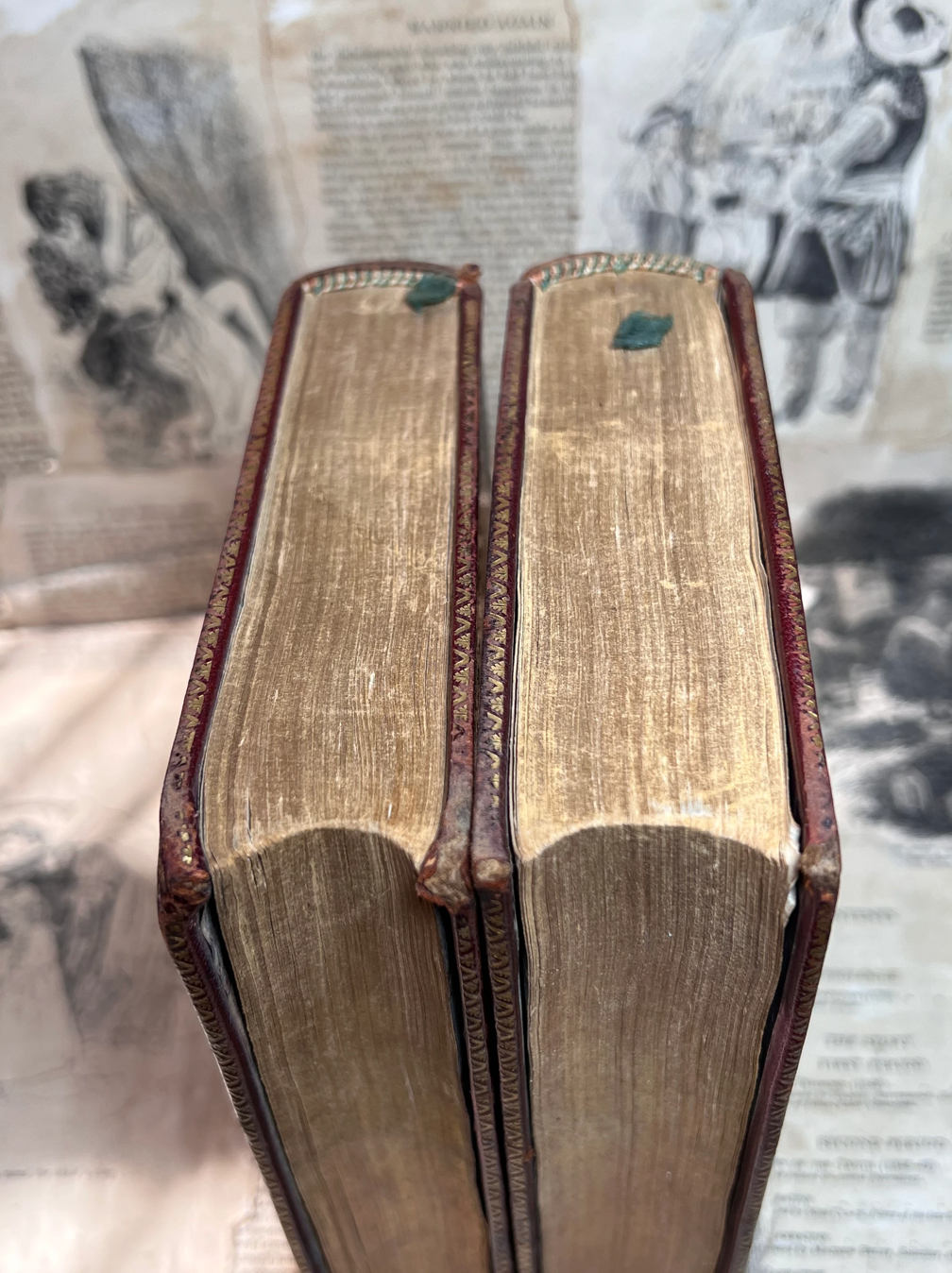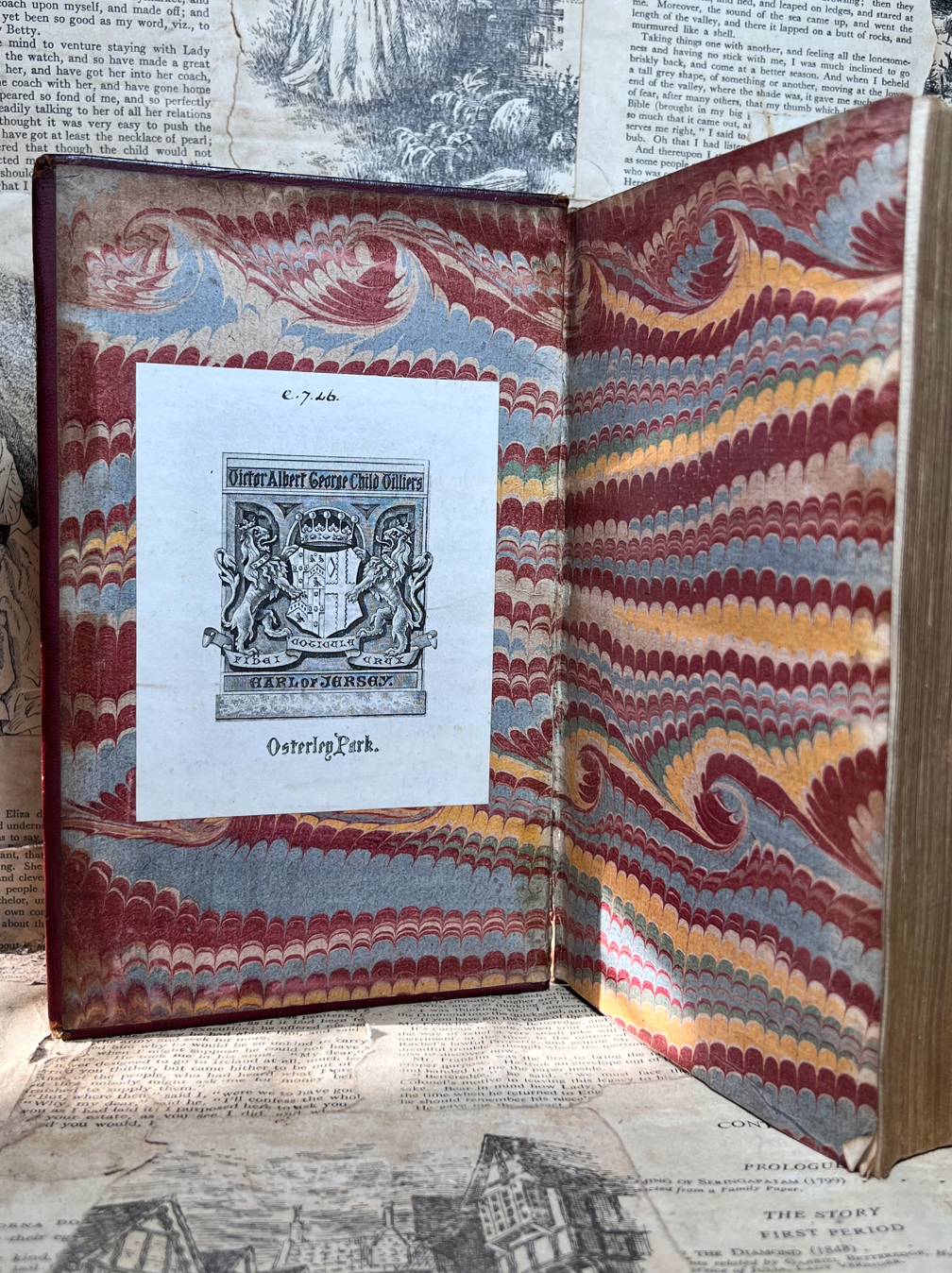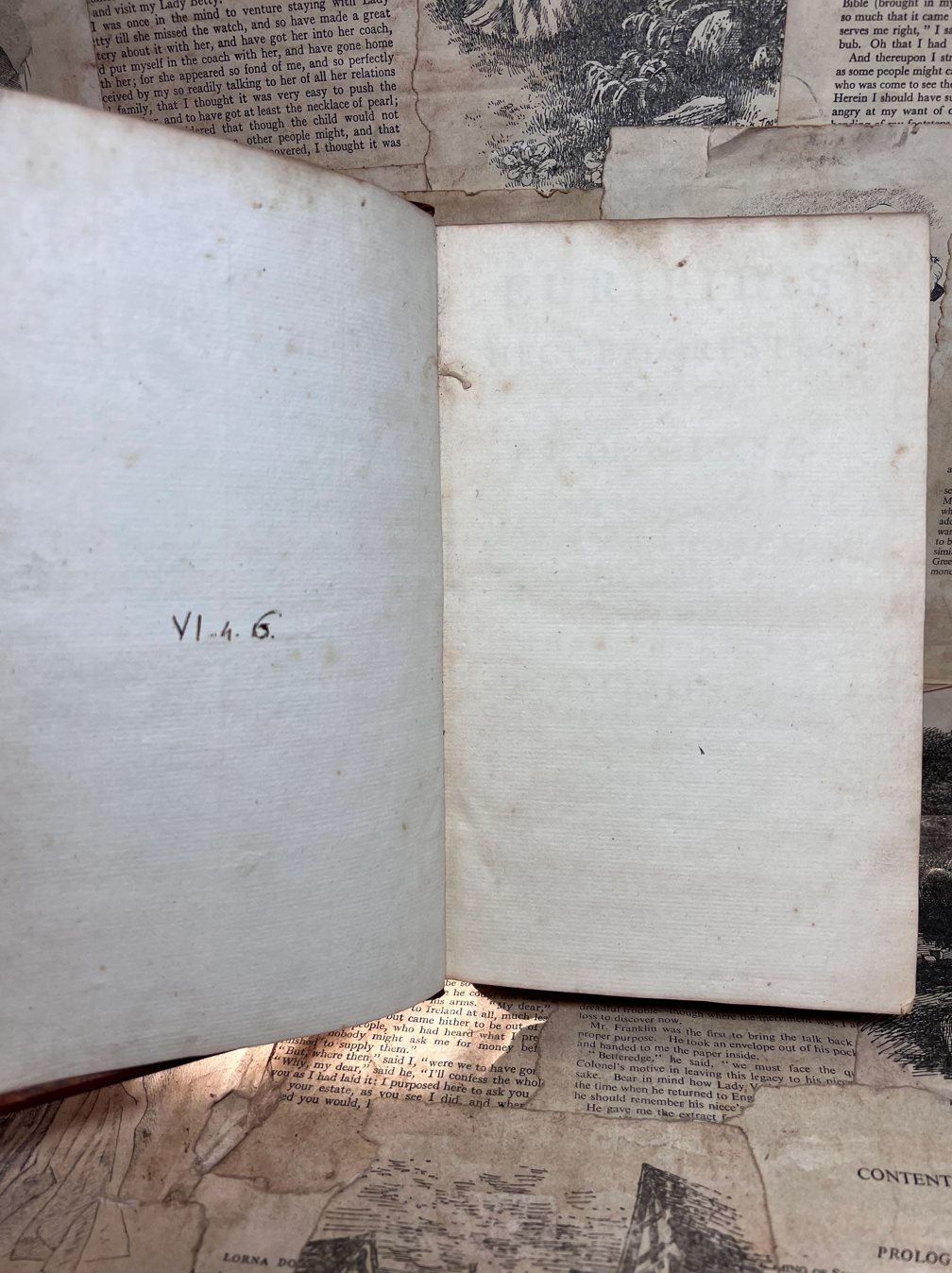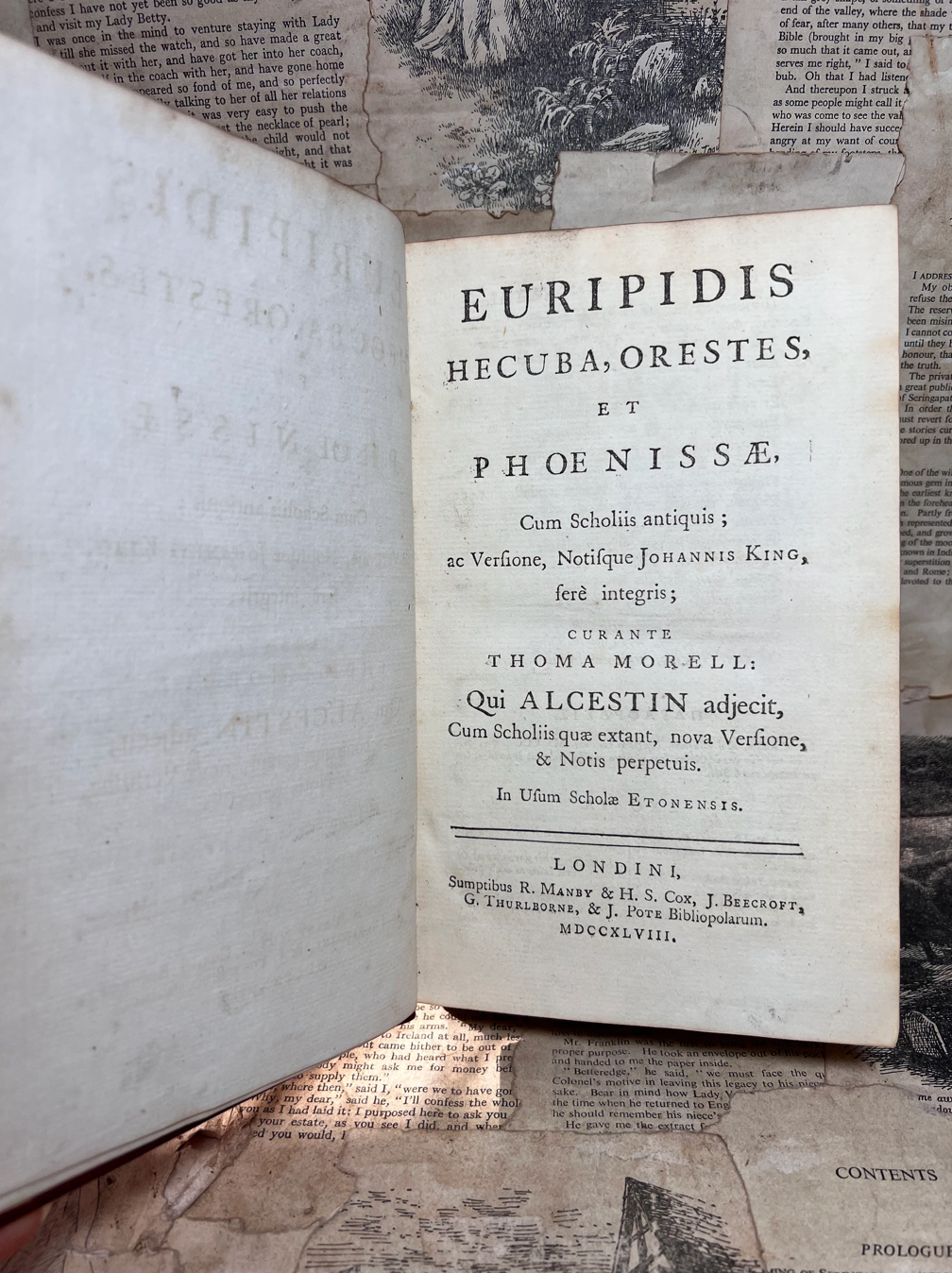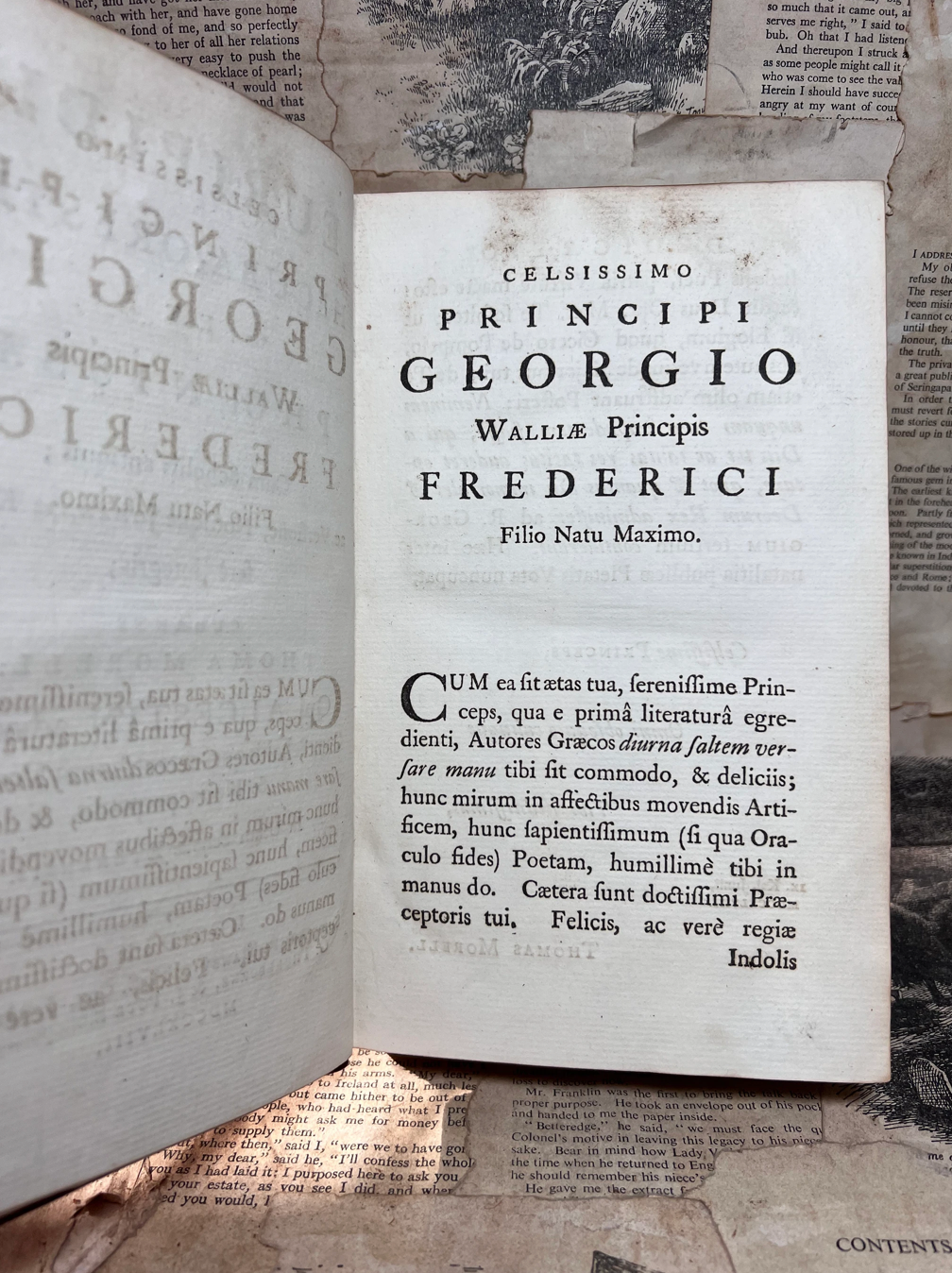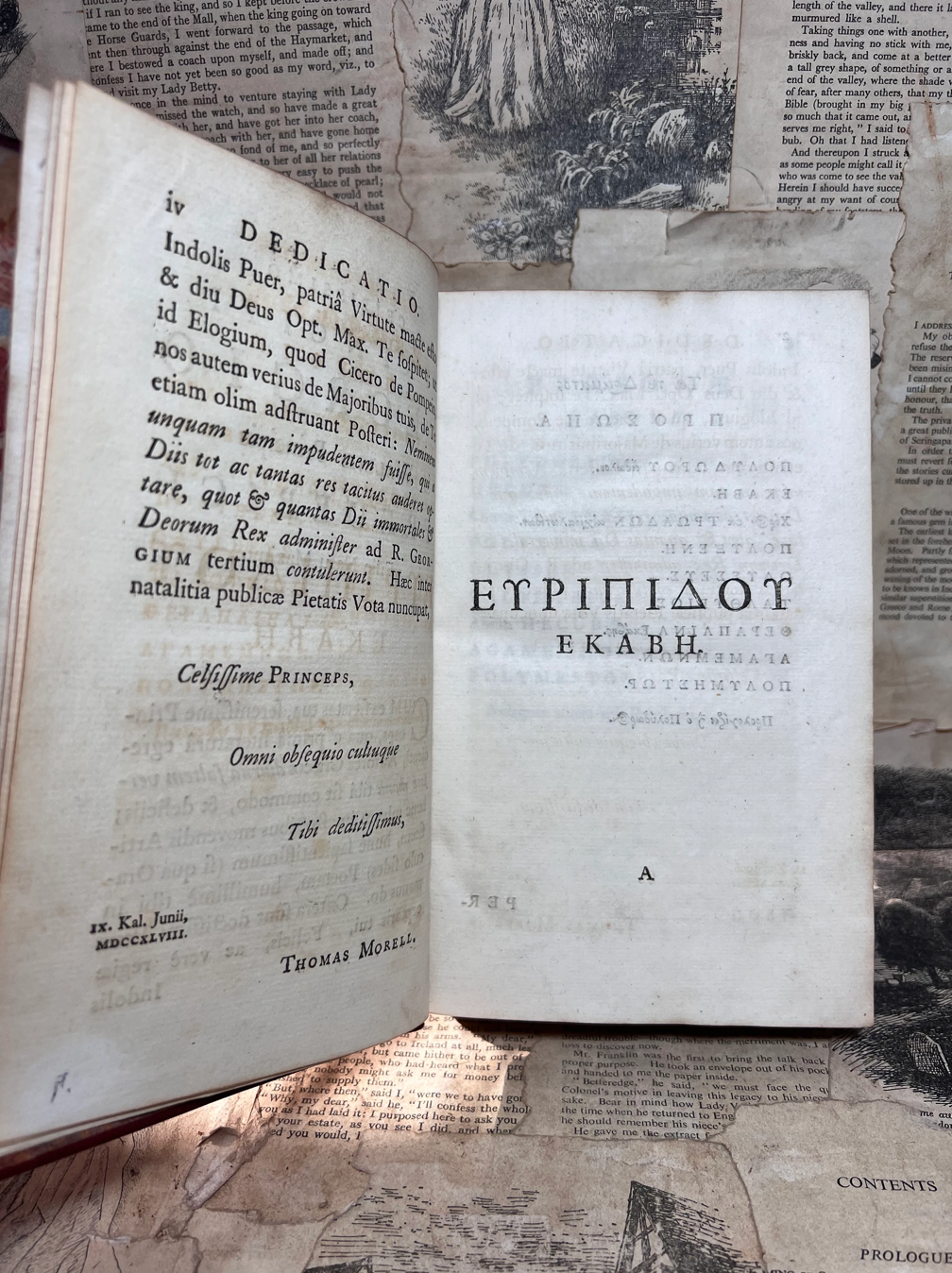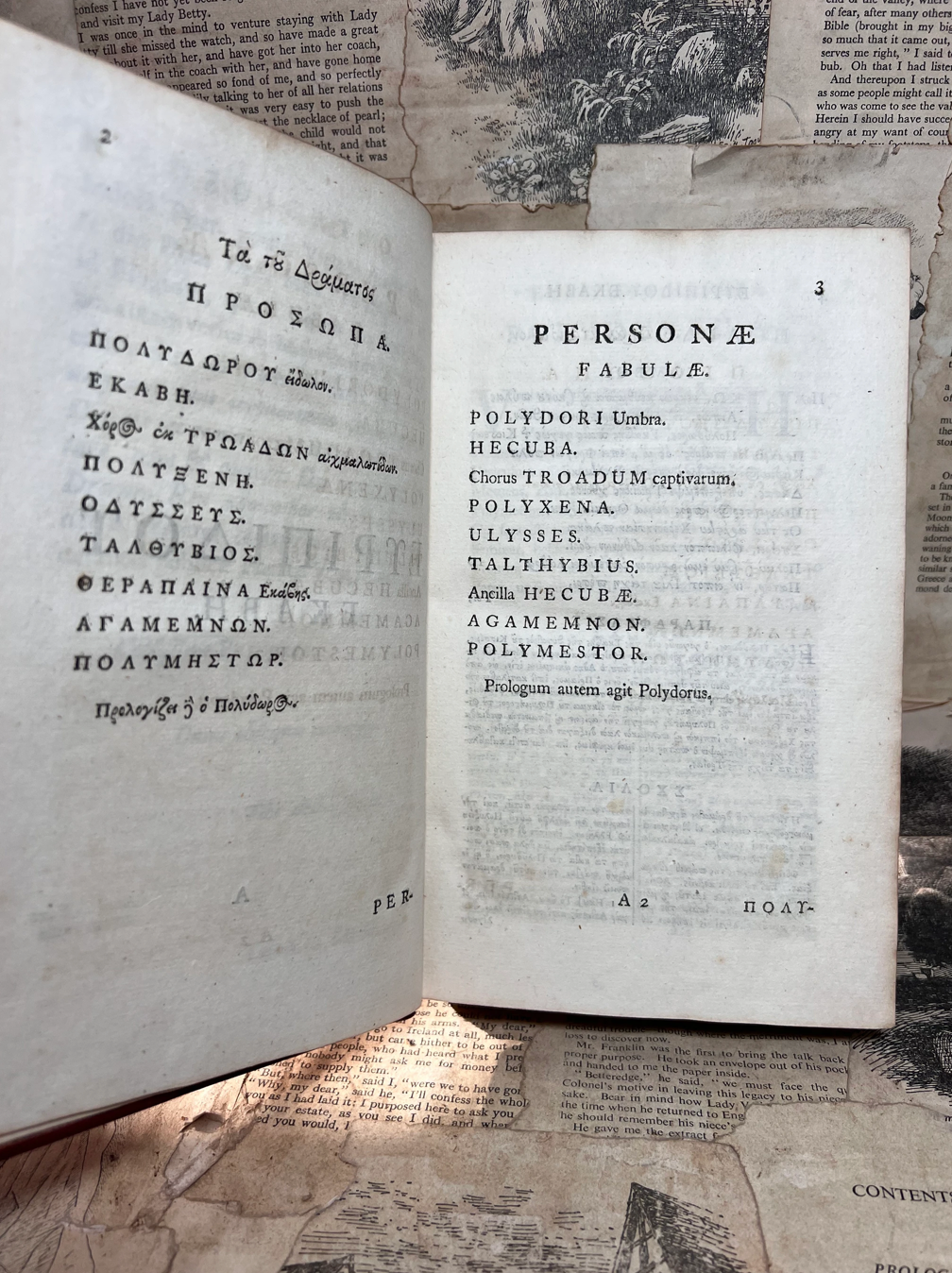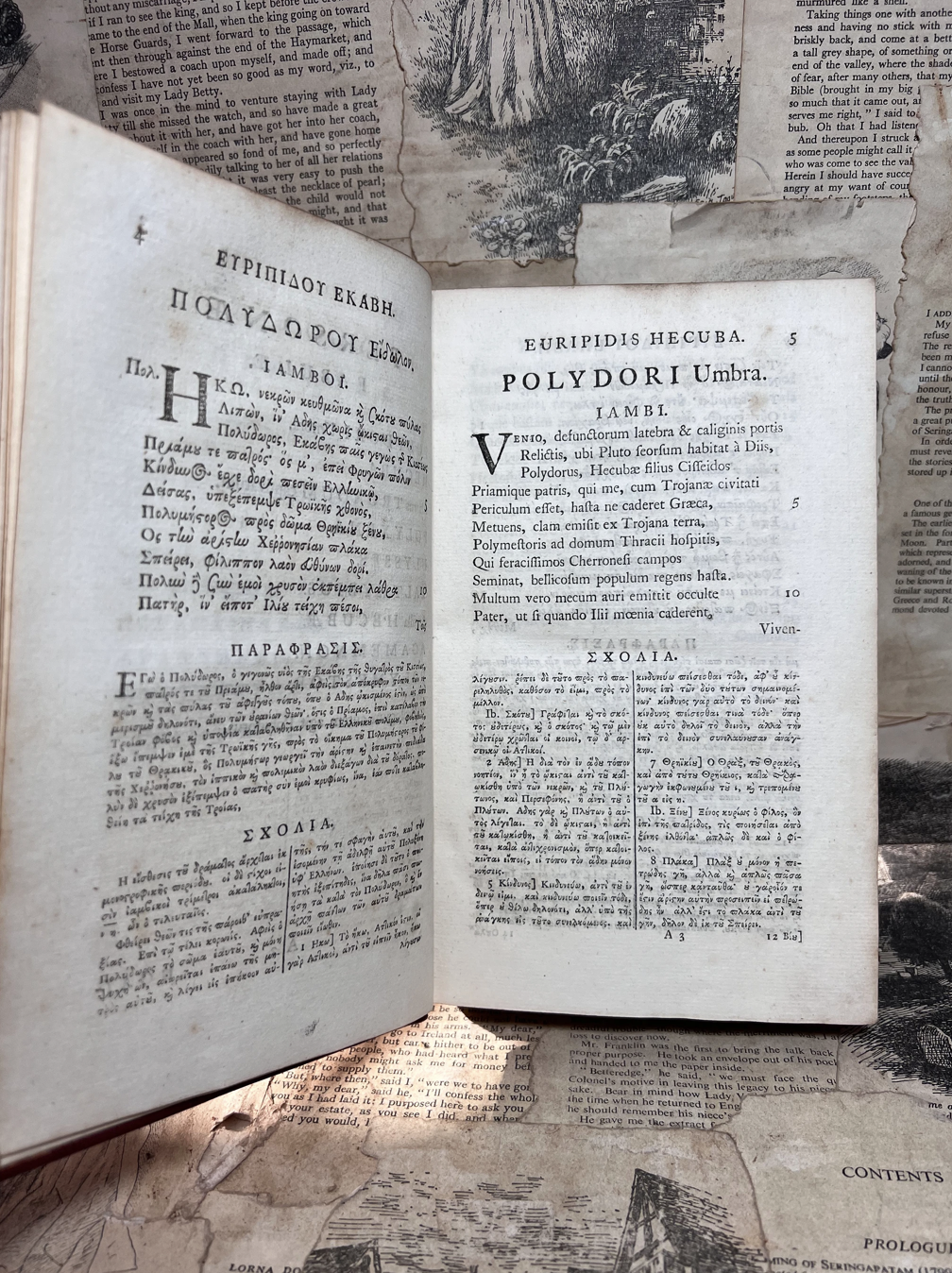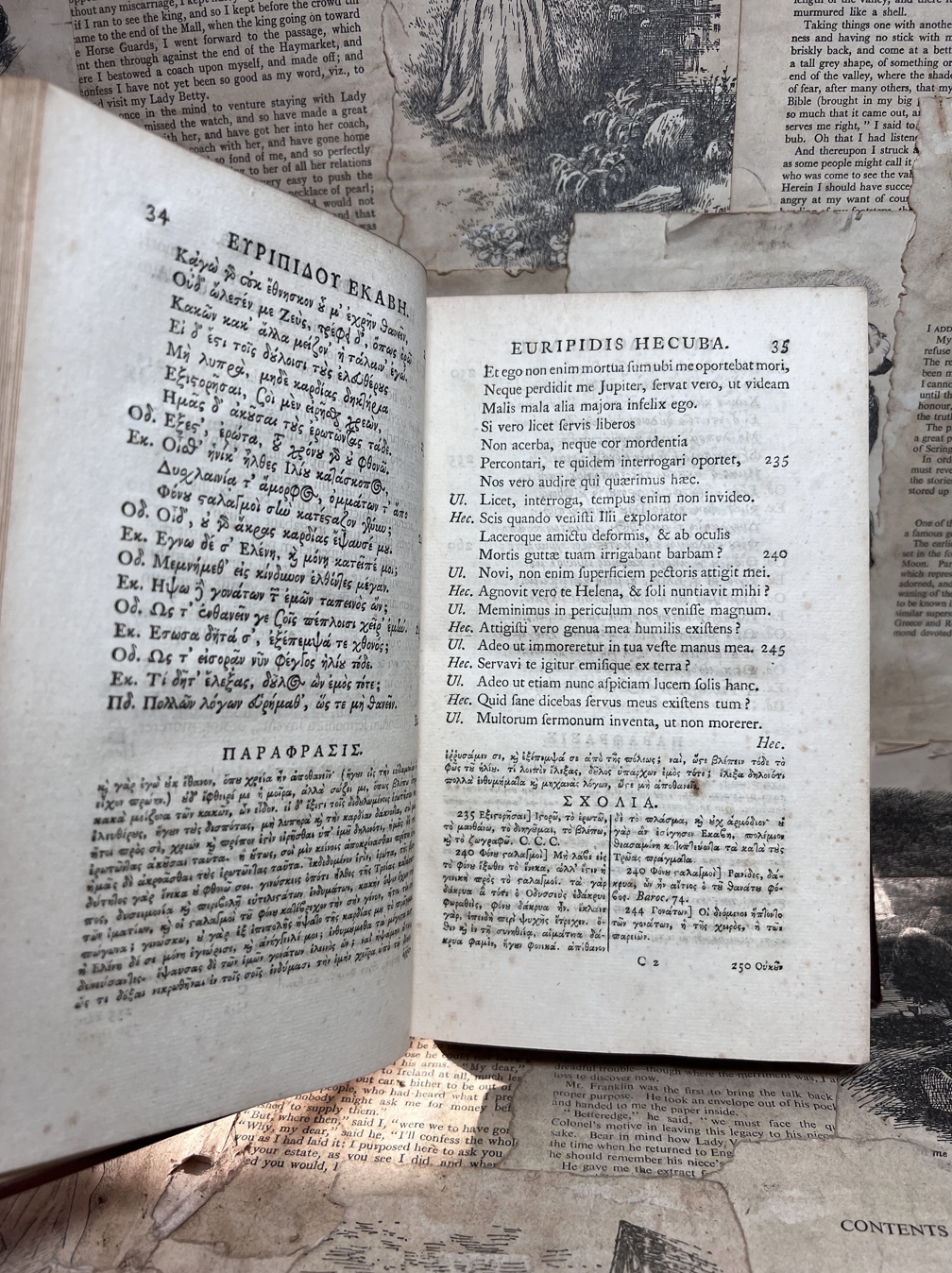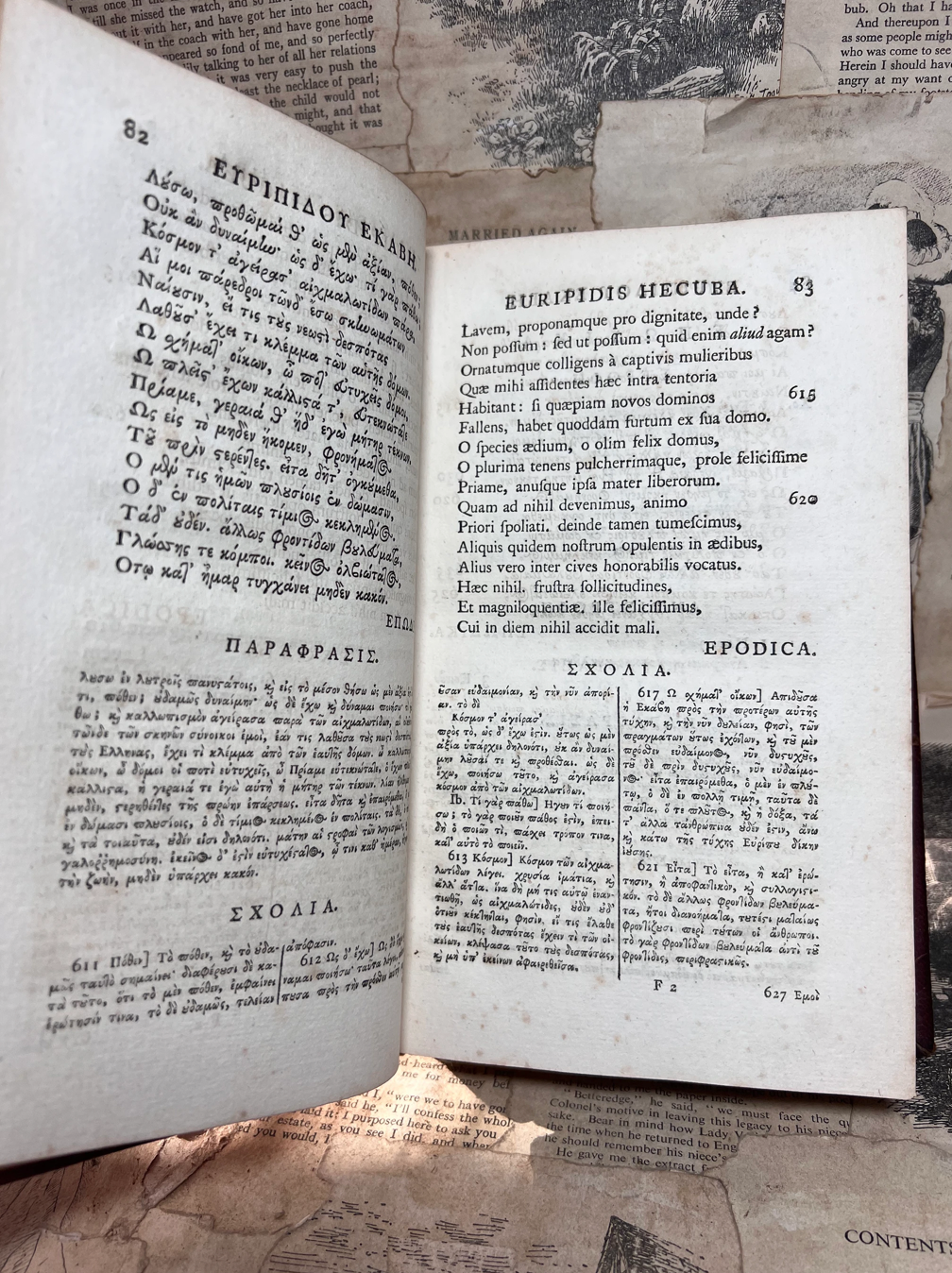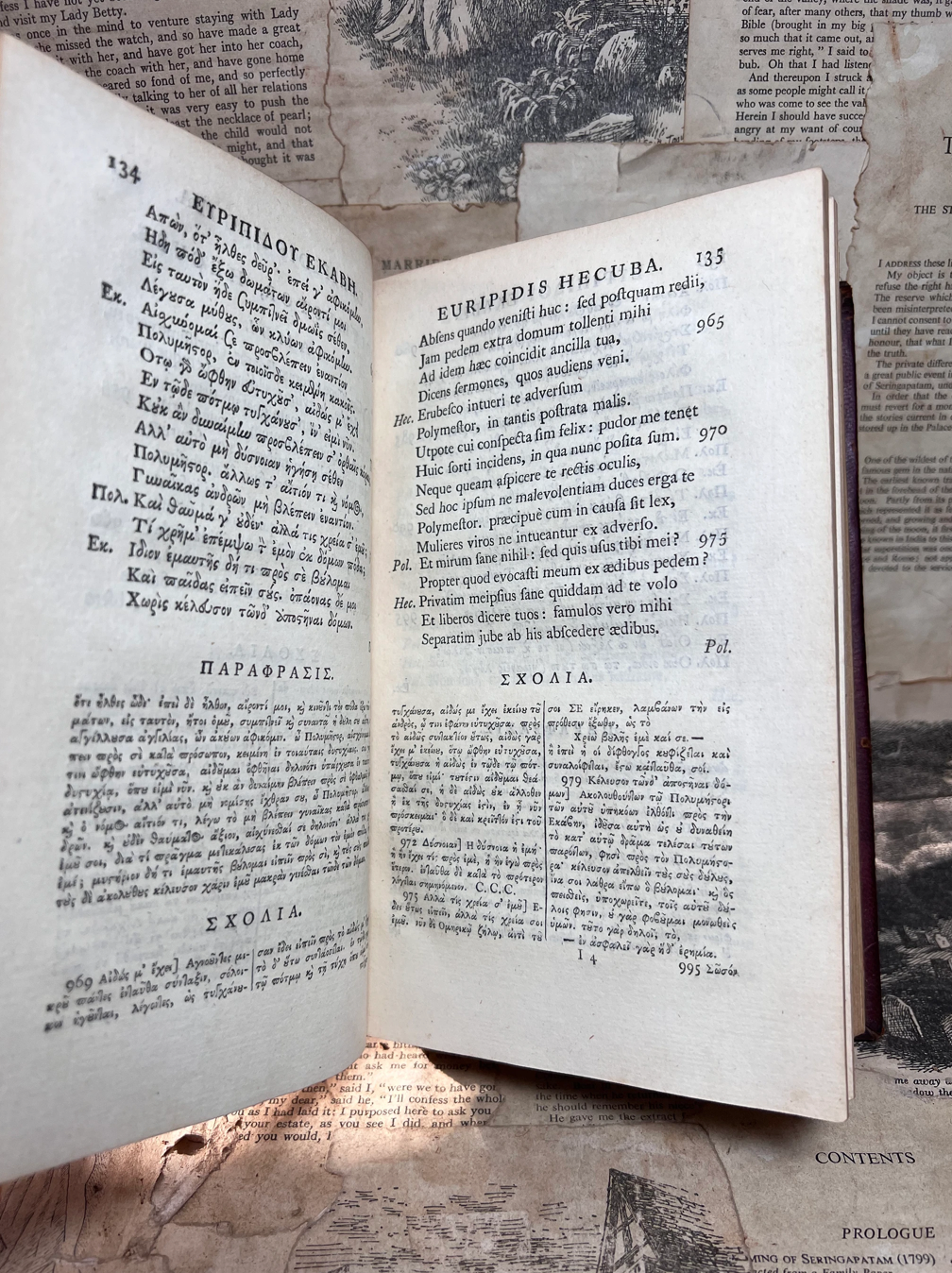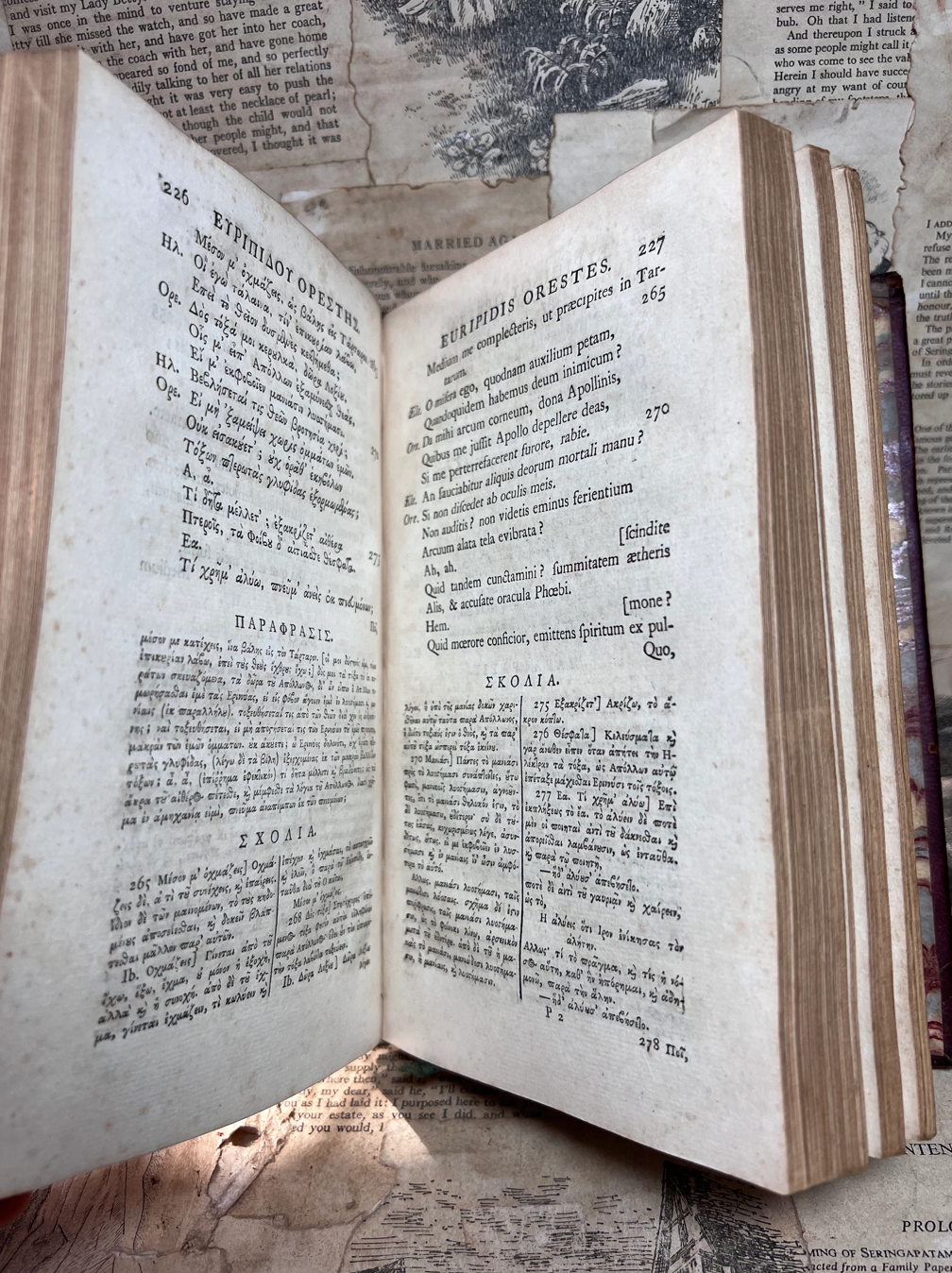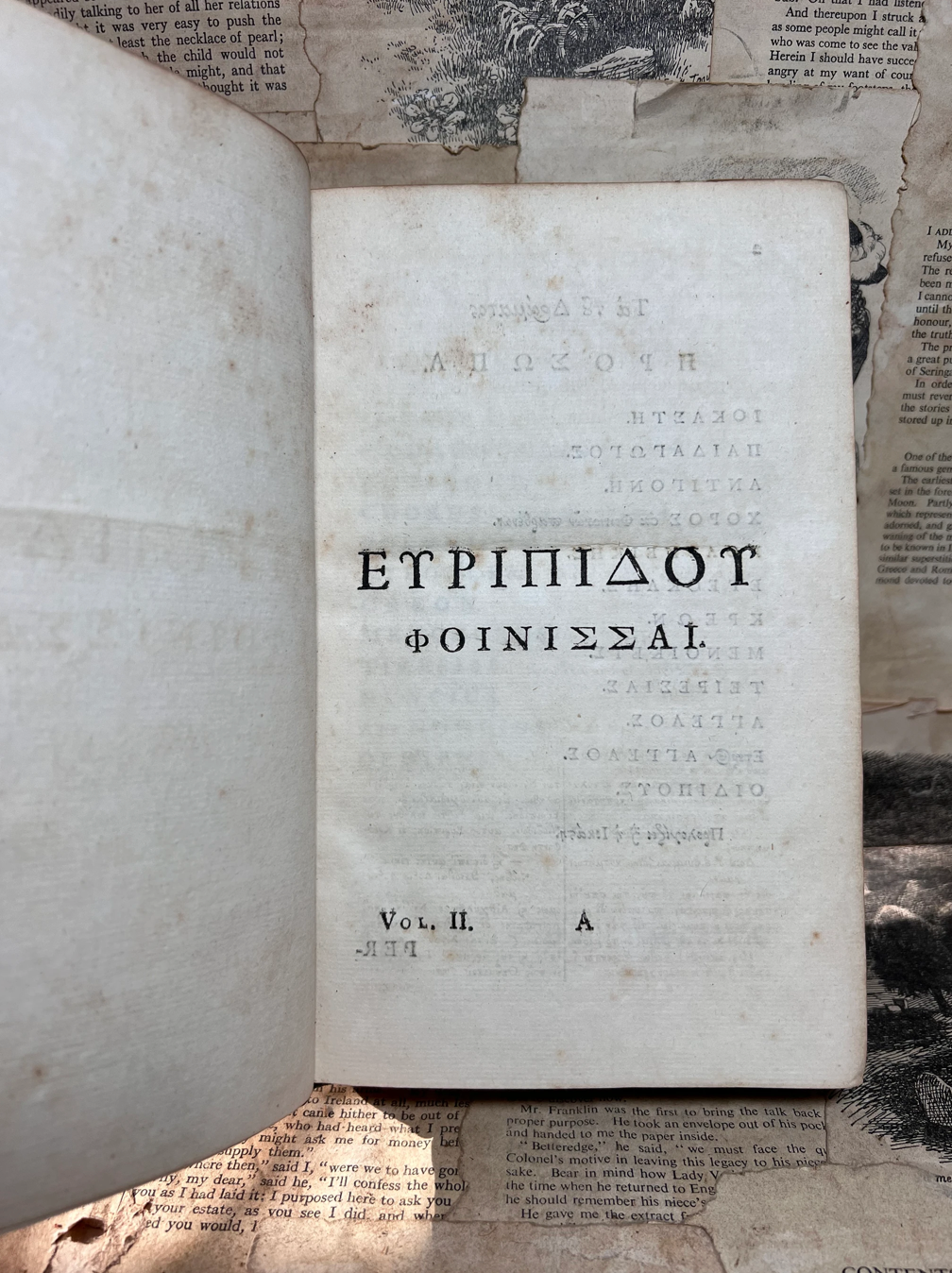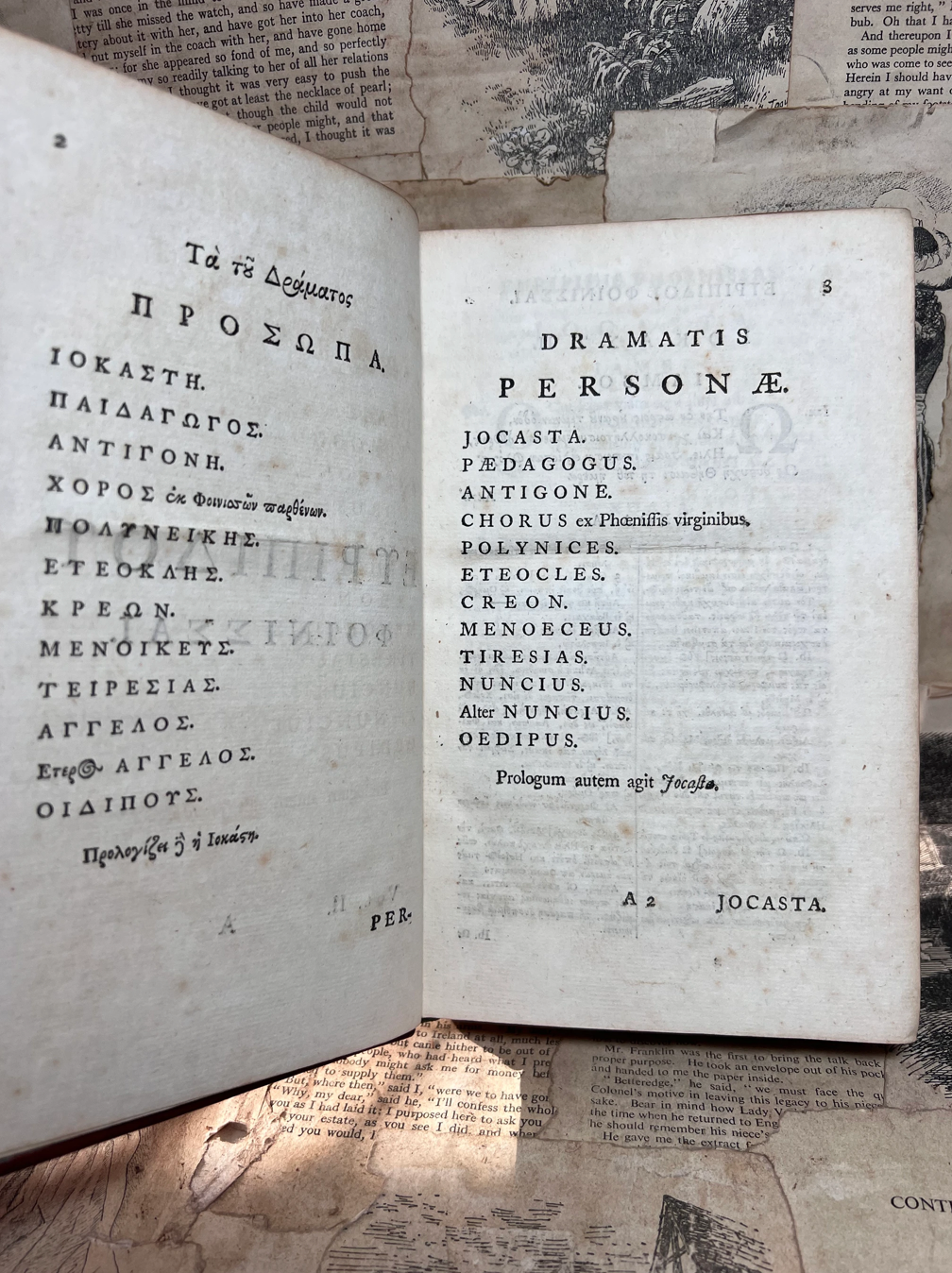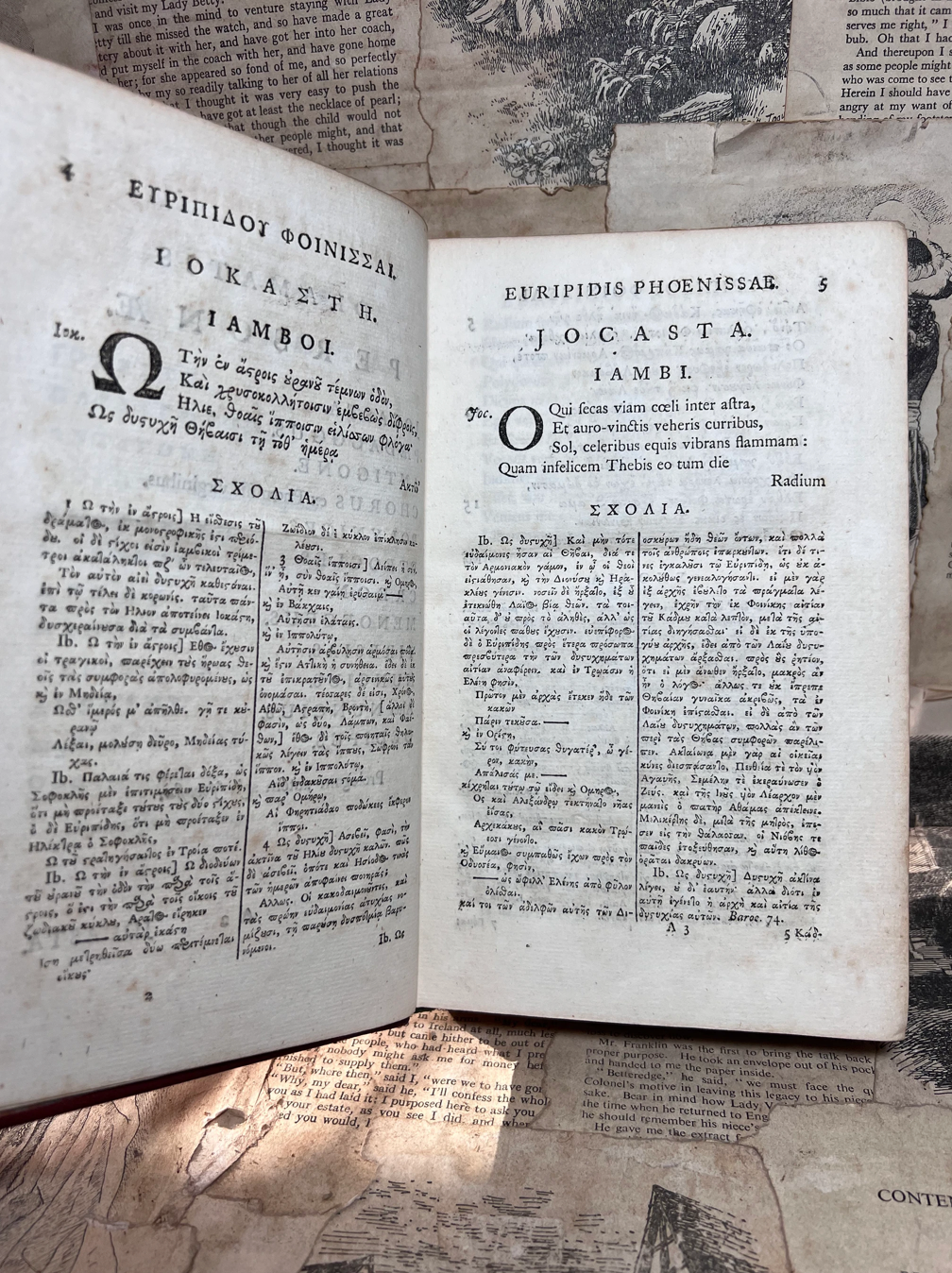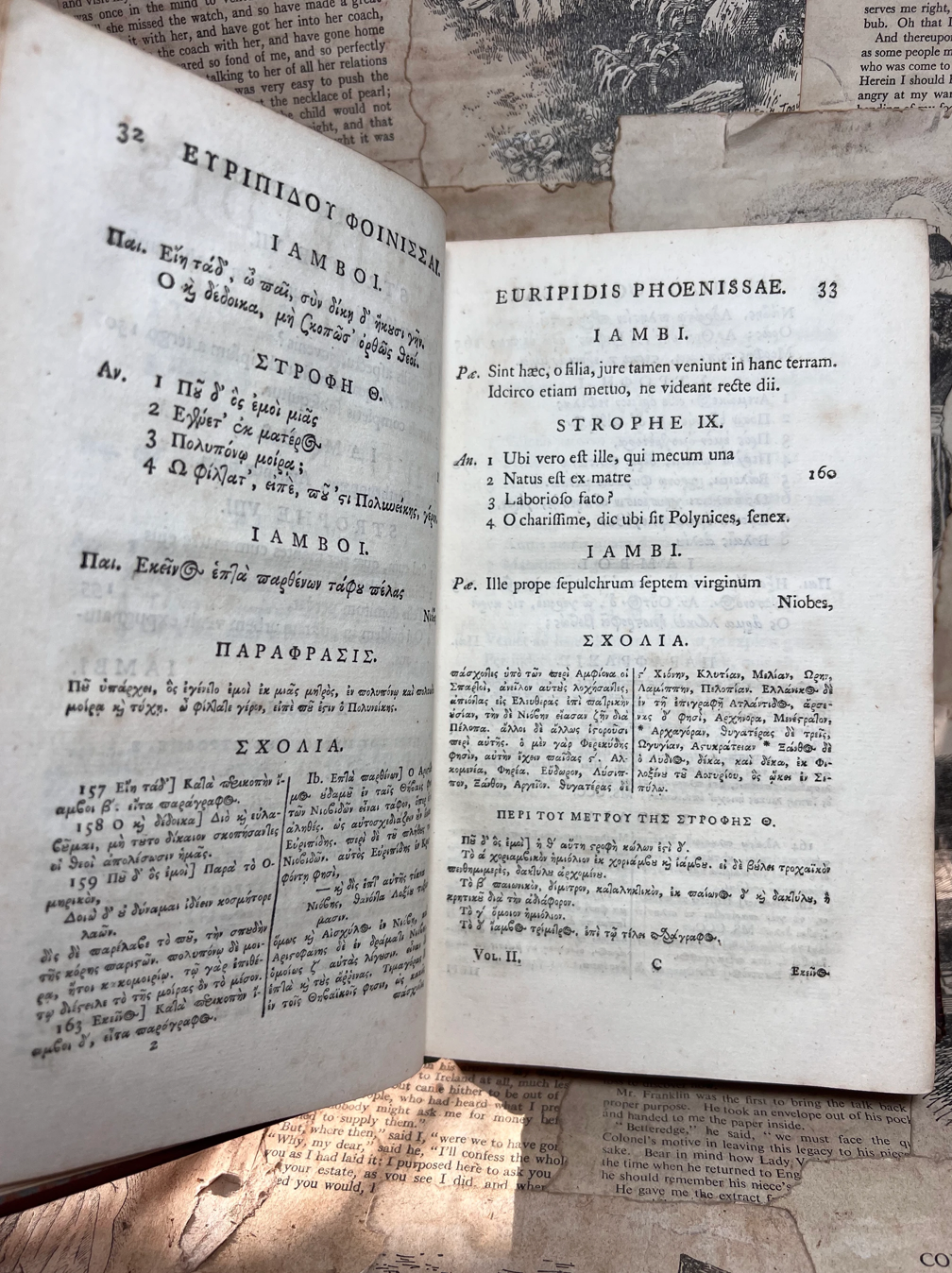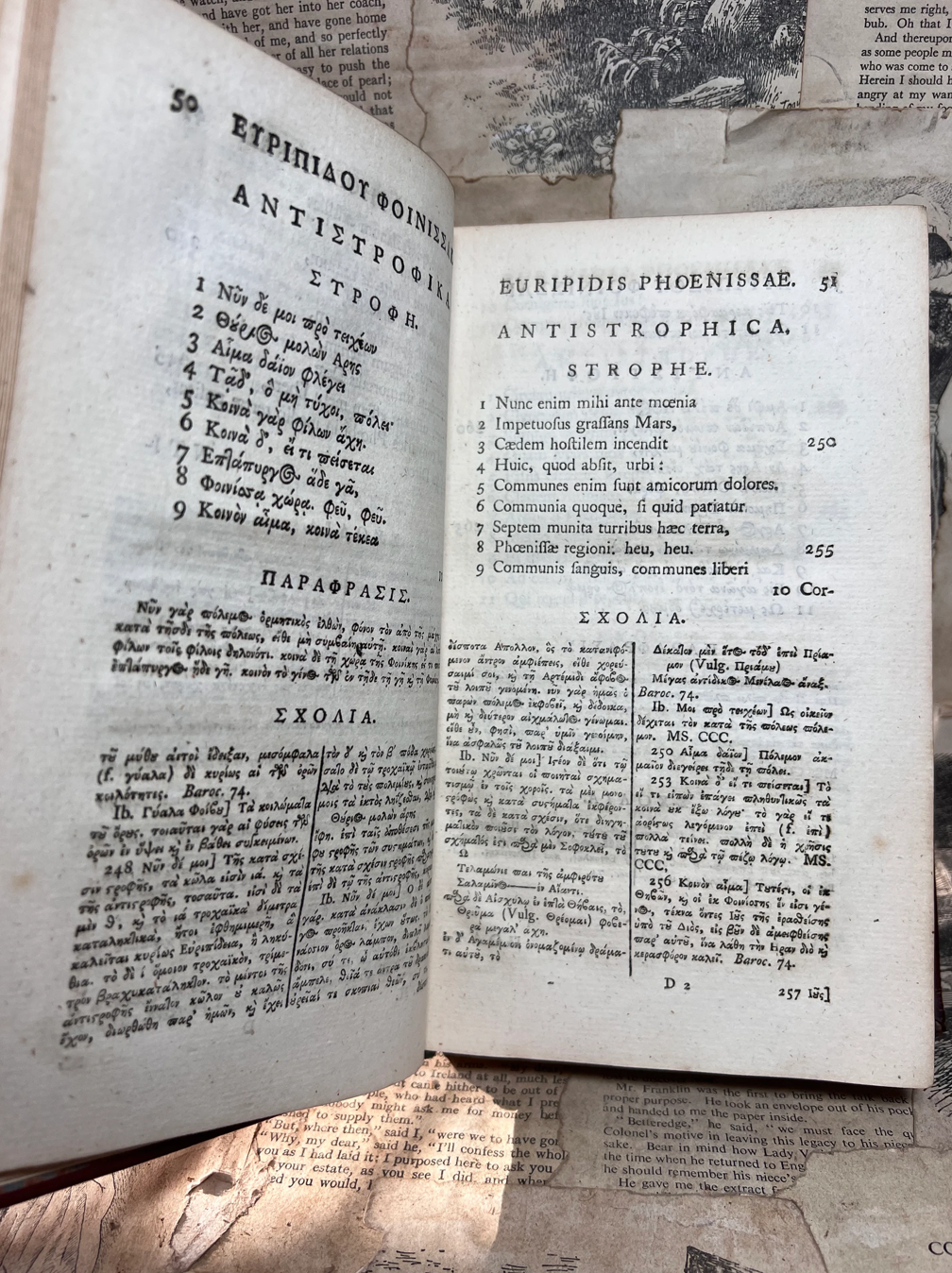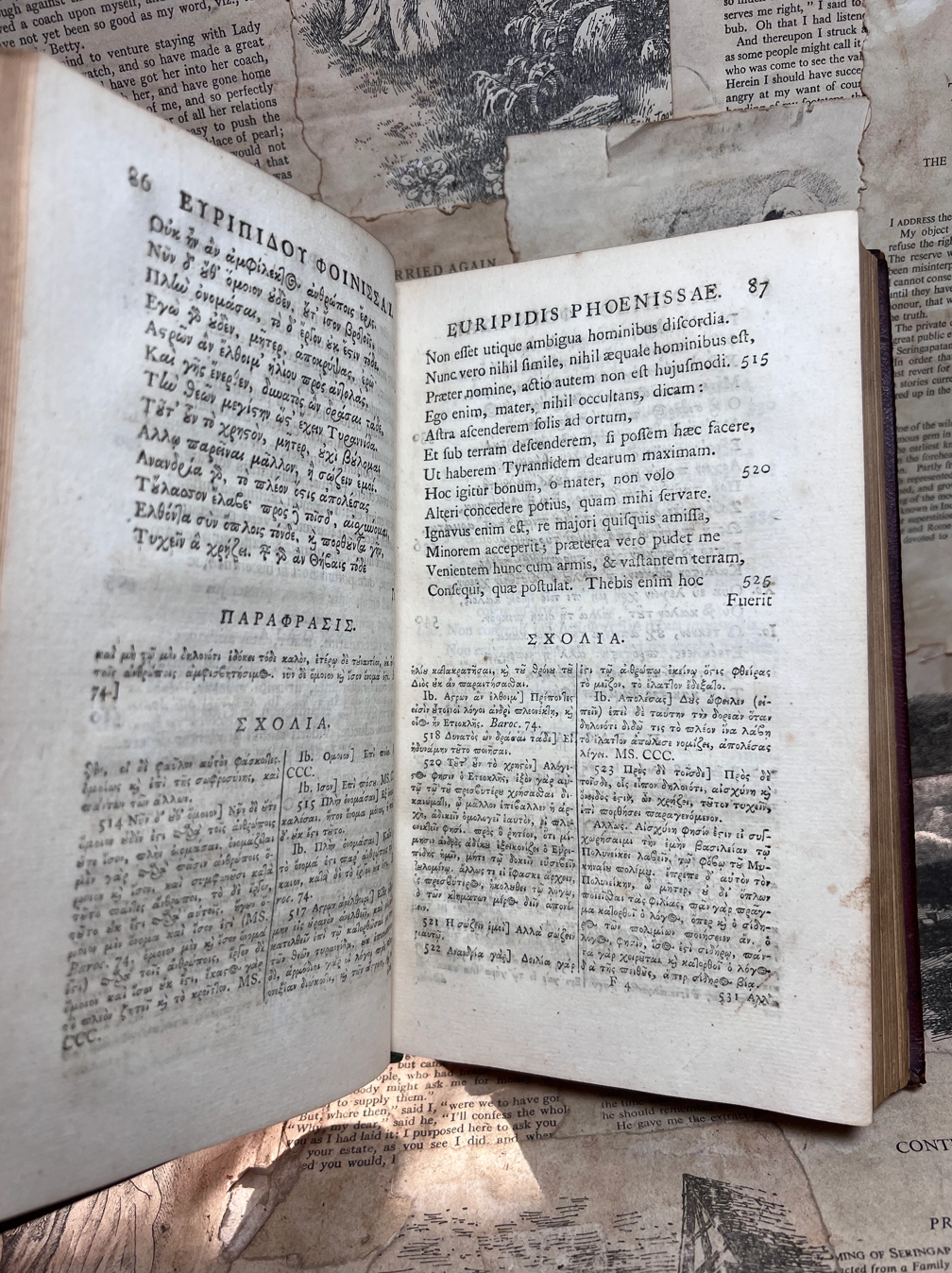1
/
of
24
Euripides' Hecuba, Orestes, and Phoenissa 1748
Euripides' Hecuba, Orestes, and Phoenissa 1748
Regular price
Sale price
£150.00 GBP
Unit price
/
per
Tax included.
Shipping calculated at checkout.
Couldn't load pickup availability
Euripidis Hecuba, Orestes, Et Phœnissæ, Cum Scholiis Antiquis; Ac Versione, Notisque Johannis King, Ferè Integris; Curante Thomas Morell: Qui Alcestin Adjecit, Cum Scholiis Quæ Extant, Nova Versione, & Notis Perpetuis. In Usum Scholæ Etonensis. Londini; Sumptibus R. Manby & H. S. Cox, J. Beecroft, G. Thurlborne, & J. Pote Bibliopolarum. MDCCXLVIII.
Euripides' Hecuba, Orestes, and Phoenissa, with the Ancient Schools; And the Version, and the Notes of John King, Almost Integris; Curante Thomas Morell: Who Added Alcestis, With the Existing Schools, New Version, & Perpetual Notes. For the use of the Eton School. London; Edited by R. Manby & H. S. Cox, J. Beecroft, G. Thurlborne, & J. Pote. MDCCXLVIII (1748).
-------------------
Euripides' Hecuba, Orestes, and Phoenissa is a collection of three plays by the ancient Greek tragedian Euripides. The first play, Hecuba, tells the story of Hecuba, the former queen of Troy, who has become a slave to the Greek warrior Agamemnon after the fall of Troy. The play deals with themes of revenge, justice, and the consequences of war. The second play, Orestes, follows the story of Orestes, the son of Agamemnon and Clytemnestra, as he seeks revenge for his father's murder. The play deals with themes of justice, revenge, and the conflicting demands of duty and personal relationships. The third play, Phoenissa (also known as The Phoenician Women), follows the story of the two sons of Oedipus, Eteocles and Polyneices, as they battle for control of Thebes. The play deals with themes of fate, family, and political power. These plays are considered some of Euripides' greatest works and continue to be studied and performed today for their insights into human nature and timeless themes.
Size: 130 x 205 mm each.
Condition:
Minor wear to spine with some minor rubbing. Both tooled labels present. Minor damage to headcaps and tails. Both boards attached. Both joints and hinges of volume one broken, boards attached with binding string. Volume two joints and hinges with minor wear. Very minor scuffing, marks and scratches on boards. Minor shelf wear. Minor wear to corners. Dulling to page edge gilt. Bookplate attached to front pastedown in both volumes. Pen inscription on preliminary in volume one. Endpapers with minor foxing. Small pencil inscription on preliminary in volume two. Text blocks toned with very minor foxing.
